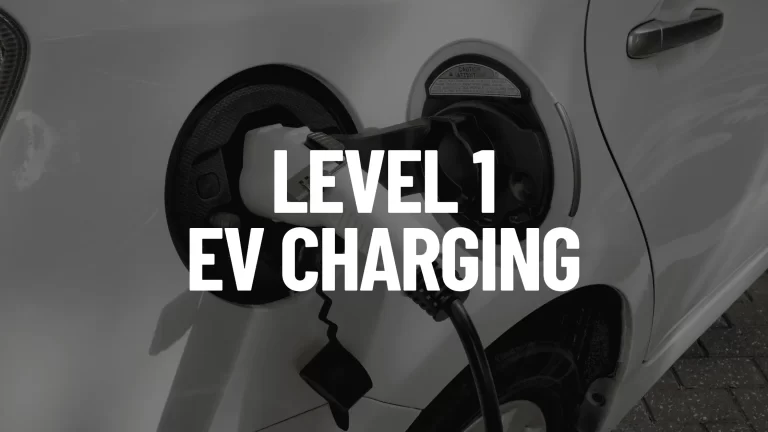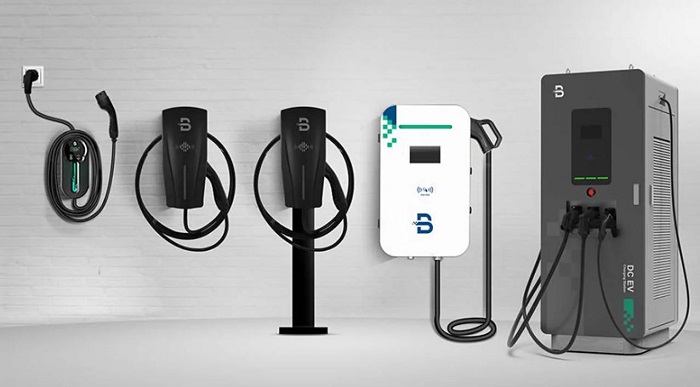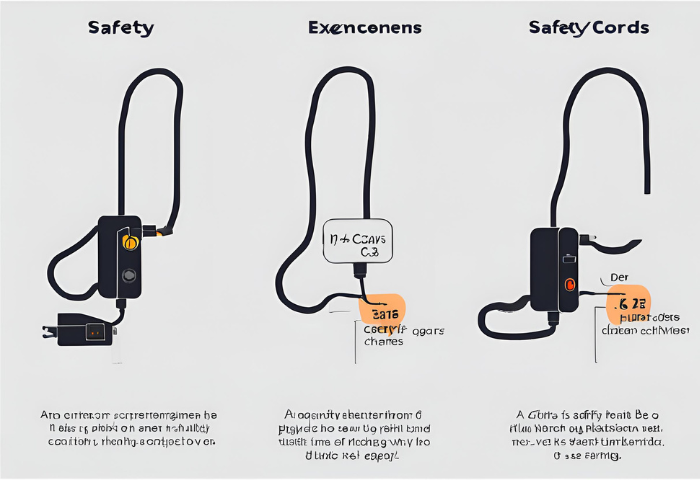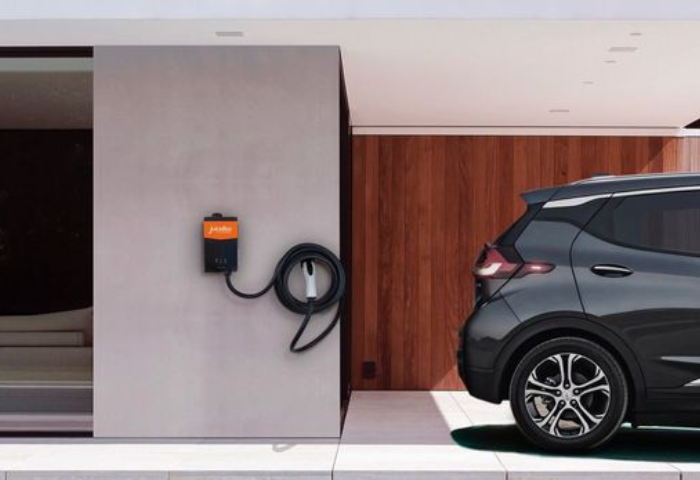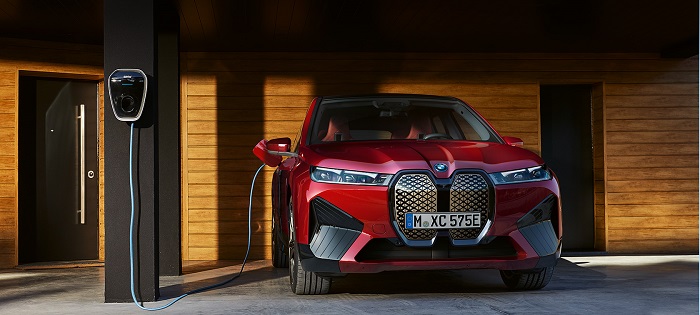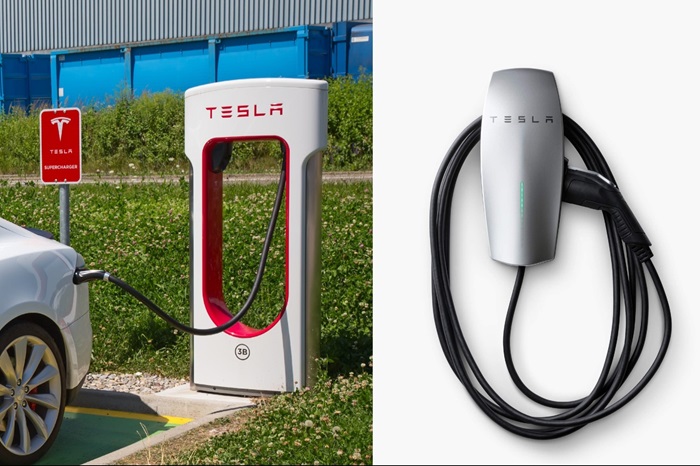Top Benefits of Outdoor Level 1 EV Chargers
For electric vehicle (EV) owners, convenience reigns supreme. Outdoor Level 1 EV chargers offer a powerful punch in a lightweight package, letting you charge your car wherever there’s a standard outlet. Forget the gas station and embrace the freedom of on-demand charging, be it at home, work, or even while visiting friends.
What are Outdoor Level 1 EV Chargers?
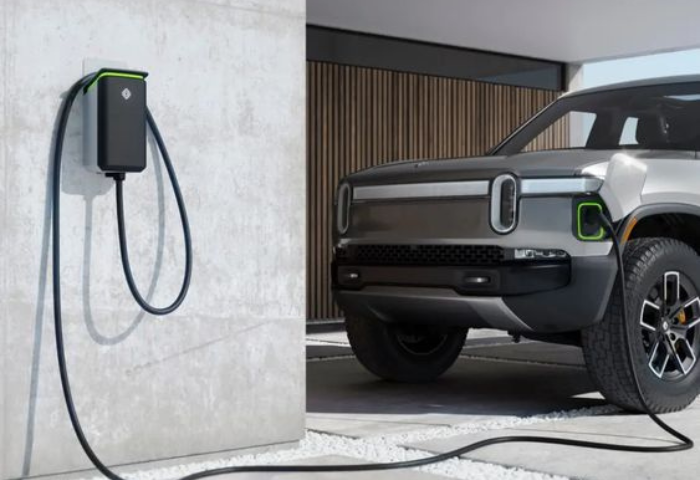
Definition of Outdoor Level 1 EV Chargers
Outdoor Level 1 EV chargers are electric vehicle charging stations designed for outdoor installation that provide Level 1 charging capabilities. Level 1 charging refers to the slowest charging option available for electric vehicles, typically utilizing a standard household electrical outlet (120 volts AC) to supply power to the vehicle’s onboard charger.
Outdoor Level 1 EV chargers are specifically designed to withstand exposure to various weather conditions, including rain, snow, and extreme temperatures, making them suitable for installation in outdoor environments such as residential driveways, parking lots, and public spaces.
These chargers typically feature weather-resistant enclosures, durable construction materials, and protective measures to ensure reliable performance and safety in outdoor settings.
Despite their slower charging speeds compared to higher-level chargers, outdoor Level 1 EV chargers offer convenience and accessibility for electric vehicle owners who may not have access to dedicated indoor charging spaces or require additional charging options at home or in public areas.
They contribute to expanding the infrastructure for electric vehicles, supporting sustainable transportation initiatives, and promoting the adoption of electric vehicles within communities.
How do outdoor Level 1 EV chargers work?
Outdoor Level 1 EV chargers work by providing electric power from a standard household electrical outlet (typically 120 volts AC) to an electric vehicle’s onboard charger. Here’s how they work:
Power Supply: Outdoor Level 1 EV chargers are typically installed in outdoor locations where access to a standard electrical outlet is available. The charger is connected to the electrical outlet via a power cord.
Charging Cable: The charger is equipped with a charging cable that plugs into the electric vehicle’s charging port. The cable delivers electric power from the charger to the vehicle’s onboard charger.
Onboard Charger: Inside the electric vehicle, there is an onboard charger responsible for converting the AC power from the charging cable into DC power that can be stored in the vehicle’s battery.
Charging Process: When the electric vehicle is plugged into the outdoor Level 1 EV charger, the onboard charger begins the charging process. The charger delivers electric power to the vehicle’s battery, slowly replenishing its energy reserves.
Charging Time: Level 1 charging is the slowest charging option available for electric vehicles, typically providing a charging rate of around 1.4 to 1.9 kilowatts (kW). As a result, it may take several hours or overnight to fully charge an electric vehicle using an outdoor Level 1 EV charger.
Completion: Once the electric vehicle’s battery is fully charged or the charging session is complete, the charger may indicate charging status through LED indicators or other visual cues. The user can then unplug the vehicle from the charger and resume driving.
Why Choose an Outdoor Level 1 EV Charger?
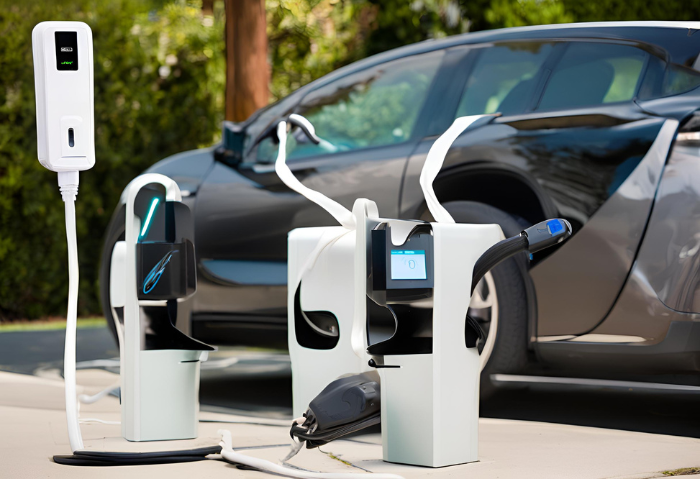
Advantages of Outdoor Level 1 EV Chargers
Advantages of Outdoor Level 1 EV Chargers:
Accessibility: Outdoor Level 1 EV chargers provide convenient access to charging for electric vehicle owners, particularly in residential areas or public spaces where indoor charging may not be feasible.
Convenience: Placing chargers outdoors eliminates the need for homeowners to maneuver their vehicles into garages or other indoor spaces for charging, saving time and effort.
Increased Charging Options: Outdoor Level 1 EV chargers expand charging options for EV owners, allowing them to charge their vehicles at home without relying solely on indoor outlets.
Flexibility: Outdoor chargers offer flexibility in charging locations, allowing homeowners to place them in areas with easy access to electrical outlets and suitable parking spaces.
Expanded Capacity: Installing chargers outdoors can help alleviate capacity constraints in indoor charging spaces, allowing multiple vehicles to charge simultaneously without overcrowding.
Enhanced Safety: Outdoor chargers reduce the risk of indoor air pollution from charging emissions and minimize the potential for fire hazards associated with indoor charging.
Weather Resistance: Outdoor Level 1 EV chargers are designed to withstand exposure to various weather conditions, including rain, snow, and extreme temperatures, ensuring reliable performance year-round.
Cost-Effective: Installing chargers outdoors may be more cost-effective than retrofitting indoor spaces for charging, especially for homeowners with limited garage or parking space availability.
Community Benefits: Publicly accessible outdoor Level 1 EV chargers promote EV adoption and sustainability initiatives within communities, encouraging environmentally friendly transportation options.
Future-Proofing: Investing in outdoor Level 1 EV chargers helps future-proof residential properties by accommodating the growing demand for electric vehicles and supporting sustainable transportation infrastructure.
Weather Resistance Features
Weather-resistant features in outdoor Level 1 EV chargers ensure reliable performance and safety in various weather conditions. Here are some common features:
Waterproof Enclosure: Outdoor chargers are typically housed in waterproof enclosures constructed from durable materials such as high-grade plastics or metals. These enclosures protect internal components from rain, snow, and moisture.
Sealed Connections: Charging cables and electrical connections are sealed to prevent water ingress, corrosion, and short circuits. This ensures the safety of users and the longevity of the charger.
UV Protection: Outdoor chargers are often treated with UV-resistant coatings to protect against sun damage and discoloration, ensuring they maintain their appearance and functionality over time.
Temperature Resistance: Outdoor chargers are designed to withstand extreme temperatures, both hot and cold, without compromising performance. Heat-resistant materials and thermal management systems prevent overheating, while insulation protects against freezing temperatures.
Impact Resistance: Chargers may feature impact-resistant housings and components to withstand accidental bumps or knocks, ensuring they remain intact and operational in outdoor environments.
Corrosion Resistance: Outdoor chargers are built with corrosion-resistant materials such as stainless steel or aluminum to withstand exposure to salt, humidity, and other corrosive elements commonly found outdoors.
Weatherproof Connections: Charging cables and connectors feature weatherproof seals and covers to protect against moisture and debris, ensuring reliable connections and preventing electrical hazards.
Anti-Theft Features: Some outdoor chargers are equipped with anti-theft measures such as locking mechanisms or tamper-resistant enclosures to prevent unauthorized access or theft.
Cost-Effectiveness
The cost-effectiveness of outdoor Level 1 EV chargers stems from their ability to provide convenient and accessible charging solutions while offering long-term benefits. Here’s how they contribute to cost-effectiveness:
Lower Installation Costs: Outdoor Level 1 EV chargers typically require minimal installation compared to indoor charging solutions, as they can be easily mounted on exterior walls or poles near existing electrical outlets. This reduces installation time and labor costs, making them a cost-effective option for homeowners and businesses.
Reduced Infrastructure Investment: Installing outdoor chargers expands the charging infrastructure without the need for expensive upgrades to indoor spaces or dedicated charging stations. This makes it a cost-effective solution for communities and municipalities looking to support electric vehicle adoption.
No Additional Space Requirements: Outdoor chargers utilize existing outdoor spaces, such as driveways, parking lots, or public areas, without requiring additional land or building expansions. This eliminates the need for costly construction or leasing of indoor charging facilities, making it a cost-effective option for property owners and businesses.
Long-Term Savings: While Level 1 charging may have slower charging speeds compared to higher-level chargers, outdoor chargers offer cost-effective charging solutions for electric vehicle owners, particularly for overnight charging at home. By utilizing off-peak electricity rates and avoiding expensive public charging fees, EV owners can save on charging costs over time.
Versatility and Scalability: Outdoor Level 1 EV chargers are versatile and scalable, allowing for easy expansion and adaptation to changing charging needs. Whether installing a single charger at home or deploying multiple chargers in public spaces, outdoor charging solutions offer cost-effective flexibility for EV owners and charging providers.
Installation and Maintenance of Outdoor Level 1 EV Chargers
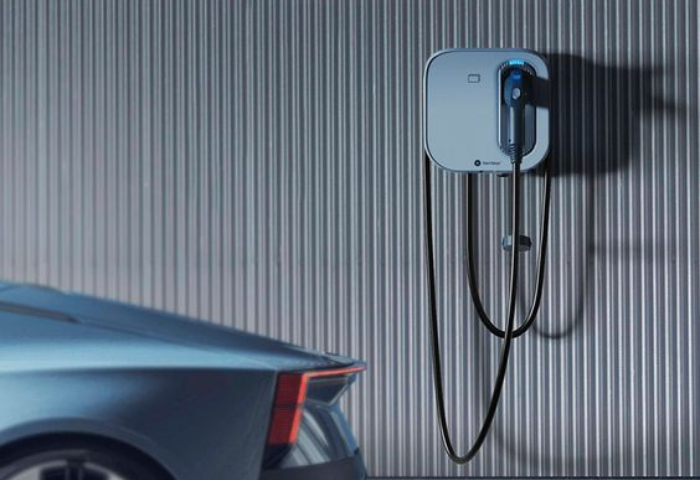
Installation Requirements
The installation requirements for outdoor Level 1 EV chargers are relatively straightforward but crucial for ensuring safe and efficient operation. Here’s an overview of the key installation requirements:
Electrical Outlet: Outdoor Level 1 EV chargers require access to a standard household electrical outlet (typically 120 volts AC) capable of delivering the necessary power for charging. Ensure the outlet is located in close proximity to the desired charging location and is compatible with the charger’s power requirements.
Weatherproof Enclosure: Choose an outdoor Level 1 EV charger with a weatherproof enclosure designed to withstand exposure to various weather conditions, including rain, snow, and extreme temperatures. The charger’s enclosure should provide adequate protection for internal components and electrical connections.
Mounting Surface: Select a suitable mounting surface for installing the outdoor charger, such as a sturdy exterior wall, pole, or mounting post. Ensure the mounting surface is level, stable, and capable of supporting the weight of the charger and any additional equipment.
Secure Installation: Install the outdoor charger securely using appropriate mounting hardware and fasteners to prevent movement, vibration, or damage during operation. Follow the manufacturer’s instructions for proper installation and mounting specifications.
Electrical Wiring: Use high-quality electrical wiring and conduit suitable for outdoor use to connect the charger to the electrical outlet. Ensure the wiring is properly insulated, protected from moisture, and routed to prevent tripping hazards or damage.
Grounding: Ensure the outdoor Level 1 EV charger is properly grounded according to local electrical codes and regulations. Grounding helps prevent electrical shocks and ensures the safe operation of the charger.
Proximity to Vehicles: Position the outdoor charger in a location that provides easy access for electric vehicles while minimizing obstruction to pedestrian and vehicle traffic. Consider factors such as parking space availability, vehicle maneuverability, and visibility when determining the charger’s placement.
Compliance with Regulations: Verify that the installation of the outdoor Level 1 EV charger complies with local building codes, electrical regulations, and permitting requirements. Obtain any necessary permits or approvals before installing the charger to ensure legal compliance and safety.
Best Practices for Maintenance
Implementing regular maintenance practices is essential for ensuring the optimal performance and longevity of outdoor Level 1 EV chargers. Here are some best practices for maintenance:
Scheduled Inspections: Establish a schedule for routine inspections of the charger and its components. Regularly check for signs of wear, damage, or corrosion, paying close attention to electrical connections, cables, and enclosure integrity.
Cleaning and Debris Removal: Keep the charger and surrounding area clean and free of debris, dirt, and vegetation. Regularly remove leaves, branches, and other obstructions that could impede airflow or access to the charger.
Weatherproofing Checks: Inspect the charger’s weatherproof enclosure for any signs of damage, deterioration, or water ingress. Ensure that seals, gaskets, and protective covers are intact and functioning properly to maintain weather resistance.
Electrical Safety Checks: Periodically test the charger’s electrical connections, grounding, and wiring for tightness and continuity. Verify that electrical components are properly insulated and protected from moisture, corrosion, and physical damage.
Temperature Monitoring: Monitor ambient temperatures around the charger and internal temperatures within the enclosure. Ensure that the charger operates within its specified temperature range to prevent overheating or performance degradation.
Firmware Updates: Stay informed about firmware updates and software patches released by the charger manufacturer. Regularly update the charger’s firmware to access new features, performance improvements, and security enhancements.
Battery Health Management: If the charger is equipped with battery management features, monitor battery health and performance parameters regularly. Implement recommended maintenance practices to optimize battery longevity and charging efficiency.
Emergency Preparedness: Develop an emergency response plan for addressing unforeseen events such as power outages, equipment failures, or severe weather conditions. Maintain contact information for service providers and emergency responders in case assistance is needed.
Training and Documentation: Provide training for personnel responsible for charger maintenance and operation. Document maintenance activities, inspection results, and any issues encountered, along with corrective actions taken.
Professional Servicing: Schedule periodic professional servicing and preventive maintenance checks performed by qualified technicians or service providers. Address any identified issues promptly to prevent downtime and ensure continued charger reliability.
Factors to Consider Before Purchasing an Outdoor Level 1 EV Charger
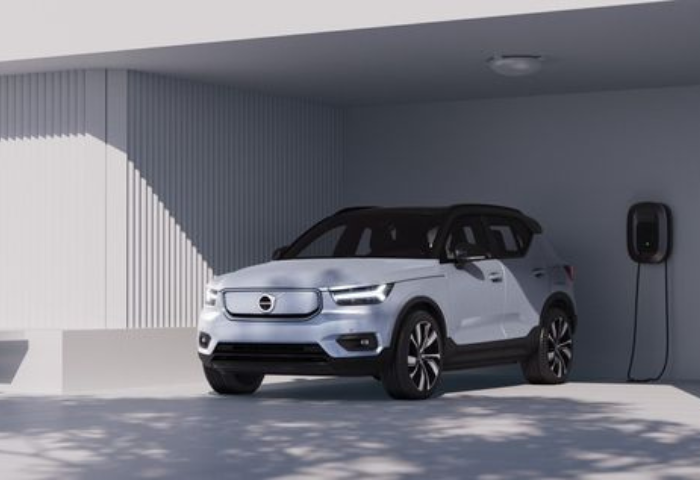
Power Output Compatibility
Power output compatibility refers to the ability of an outdoor Level 1 EV charger to deliver the appropriate charging power compatible with the electric vehicle’s onboard charging system. Here’s how power output compatibility works:
Matching Power Ratings: Outdoor Level 1 EV chargers are designed to provide a specific power output, typically ranging from 1.4 to 1.9 kilowatts (kW). It’s essential to ensure that the charger’s power output matches the requirements of the electric vehicle’s onboard charger.
Vehicle Charging Capabilities: Electric vehicles have onboard chargers with different power ratings, which determine the maximum charging speed they can accept. Before selecting an outdoor Level 1 EV charger, verify that its power output is compatible with the electric vehicle’s charging capabilities.
Charging Time: The power output of the outdoor Level 1 EV charger influences the charging time required to replenish the electric vehicle’s battery. Higher power output chargers can charge the vehicle faster, while lower power output chargers may require longer charging times.
Efficiency and Charging Rates: Outdoor Level 1 EV chargers with higher power outputs are generally more efficient and can deliver faster charging rates. However, the actual charging speed also depends on factors such as battery capacity, state of charge, and charging protocols supported by the vehicle.
Safety and Compatibility: Using an outdoor Level 1 EV charger with a power output that exceeds the vehicle’s charging capabilities can lead to compatibility issues, overheating, or damage to the vehicle’s onboard charger. It’s essential to select a charger with a power output that matches the electric vehicle’s specifications to ensure safe and efficient charging.
Future-Proofing: Consider the power output compatibility of the outdoor Level 1 EV charger concerning future electric vehicle purchases or upgrades. Investing in a charger with sufficient power output ensures compatibility with a wide range of electric vehicle models and charging requirements over time.
Charging Speed and Efficiency
Charging speed and efficiency are crucial factors to consider when evaluating outdoor Level 1 EV chargers. Here’s how charging speed and efficiency work and why they’re important:
Charging Speed: Charging speed refers to how quickly an electric vehicle’s battery can be replenished with energy from the charger. Outdoor Level 1 EV chargers typically provide slower charging speeds compared to higher-level chargers due to their lower power output, typically ranging from 1.4 to 1.9 kilowatts (kW). As a result, Level 1 chargers may take several hours or overnight to fully charge an electric vehicle, depending on the battery size and state of charge.
Efficiency: Charging efficiency is the ratio of energy delivered to the vehicle’s battery to the energy consumed by the charger. Efficient chargers minimize energy losses during the charging process, resulting in more effective use of electricity and reduced charging costs over time. Factors such as charger design, components, and power electronics influence charging efficiency.
Importance of Charging Speed and Efficiency:
Convenience: Faster charging speeds reduce the time required to charge an electric vehicle, providing greater convenience and flexibility for EV owners. While Level 1 chargers offer slower charging speeds compared to higher-level chargers, they are suitable for overnight charging at home or in locations where faster charging is not required.
Cost-effectiveness: Efficient chargers help minimize electricity consumption and charging costs over time. By maximizing charging efficiency, EV owners can reduce their energy bills and overall cost of ownership.
Optimal Battery Health: Charging at a moderate rate and maintaining high charging efficiency helps preserve the long-term health and performance of the electric vehicle’s battery. Slow, steady charging minimizes stress on the battery cells and reduces the risk of overheating or degradation.
Compatibility: Outdoor Level 1 EV chargers with consistent charging speeds and high efficiency are compatible with a wide range of electric vehicle models and battery chemicals. They provide reliable charging solutions for EV owners, regardless of their vehicle’s specifications.
Environmental Impact: Efficient charging reduces energy waste and greenhouse gas emissions associated with electricity generation. By choosing energy-efficient chargers, EV owners can minimize their carbon footprint and support sustainability initiatives.
Top Outdoor Level 1 EV Charger Brands in the Market
| Brand | Build Quality | Charging Performance | Compatibility | User-Friendly Features | Warranty and Support | Price Range |
| ClipperCreek | Robust construction, weatherproof | Reliable charging, meets safety standards | Compatible with most EV models | LED indicators, simple design | Industry-leading warranty, excellent customer support | $$ – $$$ |
| JuiceBox | Durable materials, weather-resistant | Fast and efficient charging, smart features | Wide compatibility with EVs | Smartphone app for remote monitoring | Limited warranty, responsive customer service | $$ – $$$ |
| ChargePoint | Sturdy build, suitable for outdoor use | Reliable performance, smart charging features | Compatibility with various EV models | Network connectivity for charging management | Limited warranty, reliable customer support | $$ – $$$ |
| Bosch | High-quality construction | Consistent charging, safety features | Compatible with major EV brands | Compact design, easy installation | Limited warranty, good customer service | $$ – $$$ |
| AeroVironment | Rugged design, weatherproof | Dependable charging performance | Compatible with most electric vehicles | Simple operation, durable cables | Limited warranty, responsive customer support | $$ – $$$ |
| Siemens | Durable and weather-resistant | Efficient charging, safety features | Compatible with various EV models | User-friendly interface, LED status indicators | Limited warranty, reliable customer service | $$ – $$$ |
Please note that the price range mentioned here is approximate and may vary based on factors such as features, installation requirements, and local market conditions. Additionally, it’s essential to conduct further research and read user reviews to make an informed decision based on your specific needs and preferences.
Future Trends in Outdoor Level 1 EV Charging Technology
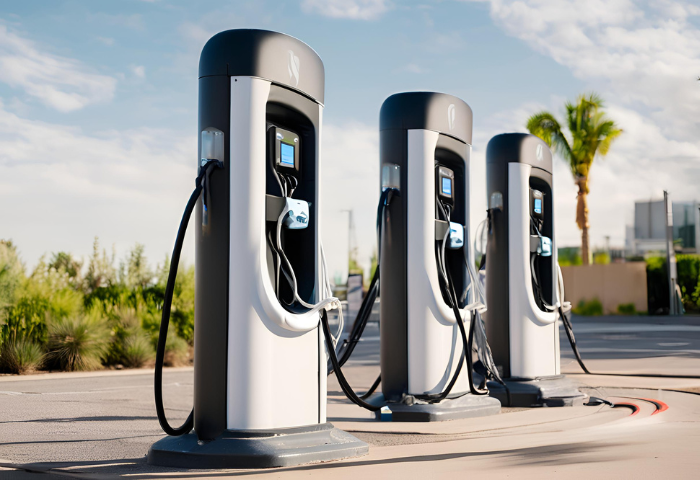
As electric vehicles (EVs) continue to gain popularity, outdoor Level 1 EV charging technology is also evolving to meet the growing demand and address emerging challenges. Here are some future trends in outdoor Level 1 EV charging technology:
Faster Charging Speeds: While Level 1 chargers are typically slower than Level 2 or DC fast chargers, advancements in charging technology may lead to faster charging speeds for Level 1 chargers. This could be achieved through improved power electronics and battery management systems.
Smart Charging Features: Integration of smart charging features will become more prevalent in outdoor Level 1 EV chargers. This includes connectivity options such as Wi-Fi or cellular connectivity, allowing users to monitor and control charging remotely via smartphone apps or web portals.
Enhanced Durability and Weatherproofing: Manufacturers will focus on improving the durability and weatherproofing of outdoor Level 1 EV chargers to ensure reliable performance in various outdoor environments. This may involve using rugged materials, enhanced sealing techniques, and corrosion-resistant coatings.
Modular and Scalable Designs: Future outdoor Level 1 EV chargers may feature modular and scalable designs that allow for easy expansion and customization. This flexibility will enable charging infrastructure providers to adapt to changing demand and deployment scenarios more efficiently.
Integration with Renewable Energy Sources: Integration of outdoor Level 1 EV chargers with renewable energy sources such as solar or wind power will become more common. This will enable EV owners to charge their vehicles using clean, renewable energy, further reducing carbon emissions.
Bidirectional Charging Capabilities: Bidirectional charging, also known as vehicle-to-grid (V2G) or vehicle-to-home (V2H) technology, allows EV batteries to discharge electricity back to the grid or power home appliances during peak demand periods. Future outdoor Level 1 EV chargers may incorporate bidirectional charging capabilities, enhancing grid flexibility and resilience.
Improved User Experience: Manufacturers will continue to focus on improving the user experience of outdoor Level 1 EV chargers through intuitive interfaces, ergonomic designs, and enhanced safety features. This will make EV charging more convenient and accessible for a broader range of users.
Data Analytics and Predictive Maintenance: The integration of data analytics and predictive maintenance algorithms will enable proactive monitoring and maintenance of outdoor Level 1 EV chargers. This will help minimize downtime, optimize performance, and extend the lifespan of the charging infrastructure.
Overall, the future of outdoor Level 1 EV charging looks promising. As technology continues to evolve, these convenient and portable chargers will become even more efficient, reliable, and user-friendly, playing a key role in the widespread adoption of electric vehicles.

Henry Michael is a leading expert in EV charging station research, specializing in innovative solutions for electric vehicle infrastructure. With a passion for sustainability and technological advancement, he is dedicated to advancing the accessibility and efficiency of EV charging worldwide.

